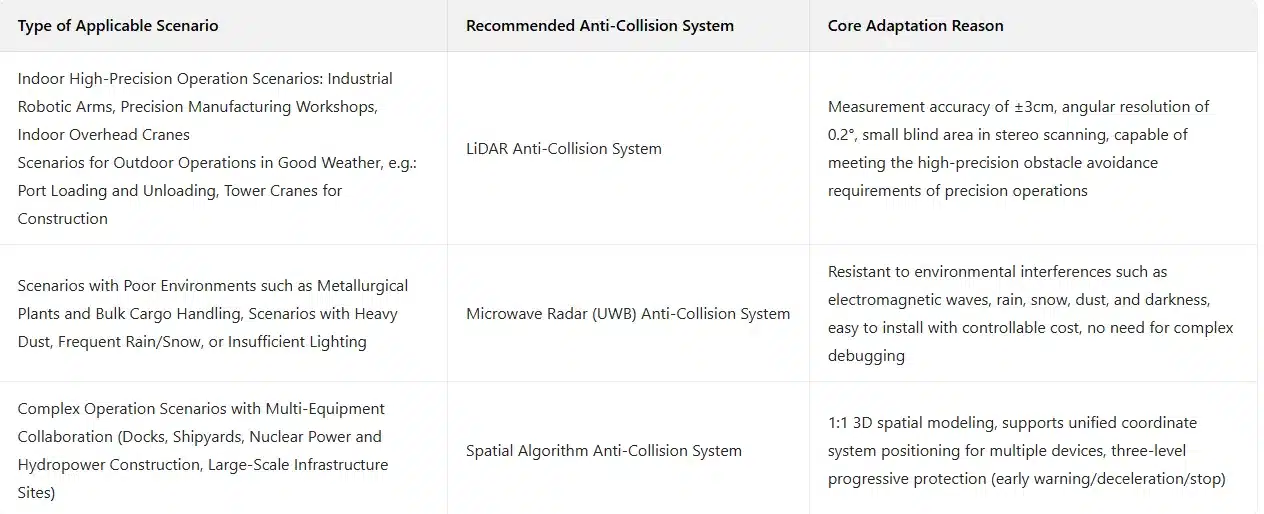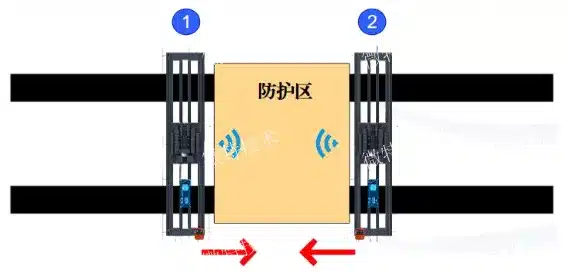"Weite has so many anti-collision systems—laser-based, microwave-based, spatial algorithm-based... Which one is really suitable for us?" Recently, many customers have raised such questions. In fact, there’s no need to worry. Each anti-collision system of Weite has its "exclusive applicable scenarios". Today, we will use plain explanations to help you quickly select the right solution, making lifting operations safe and efficient.
Weite anti-collision systems are developed based on three core technology categories, each with clear technical focuses and performance characteristics, accurately matching different operational needs:



Core Technology:Centered on "laser ranging + point cloud processing", it acquires 3D point cloud data through multi-line laser scanning, and accurately identifies the outline of obstacles by combining clustering and target recognition algorithms.
Key Performance:High measurement accuracy (up to ±3 cm), high resolution (0.2°), wide field of view (supporting 360°×90° stereo scanning), and minimal blind spots.
Notes:Requires a certain level of environmental cleanliness; rainy or snowy weather may affect detection performance.
Application Scenarios:Environments with high cleanliness and high precision requirements, such as industrial robotic arms, indoor overhead cranes, and precision manufacturing workshops; also applicable to outdoor operations in good weather, e.g., port loading/unloading and tower cranes for construction.
More:https://www.wtauserver.com/dock-crane-collision-prevention-system/


Core Technology:Adopts non-contact microwave ranging technology to realize real-time monitoring of distance, speed, and direction via radio waves, completing dynamic data calculation within 0.1 seconds.
Key Performance:Strong anti-interference capability, unaffected by environmental factors such as electromagnetic interference, rain, snow, smoke, and dust; works normally in dark or poor lighting conditions.
Outstanding Advantages:Compact size, easy installation, controllable cost, no need for complex debugging, and adaptable to rapid integration with various machine types.
Application Scenarios:Environments with harsh conditions, such as metallurgical plants and bulk cargo loading/unloading sites; scenarios with heavy dust, frequent rain/snow, or insufficient lighting.


Core Technology:Based on "spatial modeling + real-time calculation", it builds a 1:1 3D model of the site and equipment, updates the equipment position in real time through a unified coordinate system, and calculates the minimum distance between components.
Key Performance:Flexible adjustable monitoring distance, strong anti-interference capability (almost unaffected by the environment, only influenced by Beidou positioning status), and support for collaborative obstacle avoidance of multiple devices.
Outstanding Advantages:Enables three-level progressive protection (early warning, deceleration, and stop), and adapts to multi-device cross-operation in complex dynamic scenarios.
Application Scenarios:Scenarios with cross-operation, movement, and combined lifting of multiple lifting devices, such as docks, shipyards, nuclear power/hydropower construction sites, and large-scale infrastructure sites.
More:https://www.wtauserver.com/multi-device-intelligent-collision-avoidance-system-solution/
Previous: A device to prevent the crane from toppling over or overreeling, lift height limiter
Next Article: